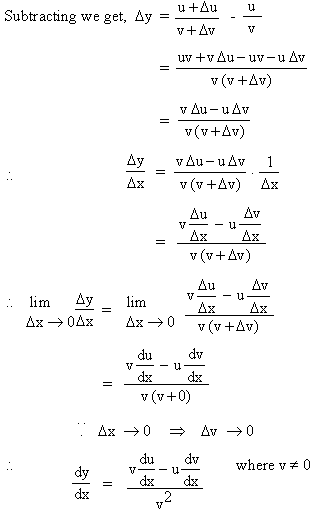|
Then y + Dy = (u
+ Dx) (v
+ Dx) =
uv + v Du
+ u Dv
+ Du .
Dv.
Subtracting we get, Dy = v
du + u dv + Du
. Dv
\
\ 
i.e. 
(3) Let y = u / v. Let Dy
, Du and
Dv be changes
in y, u and v respectively in y, u and v respectively corresponding
to a small change Dx in x.
Then y + Dy =


|